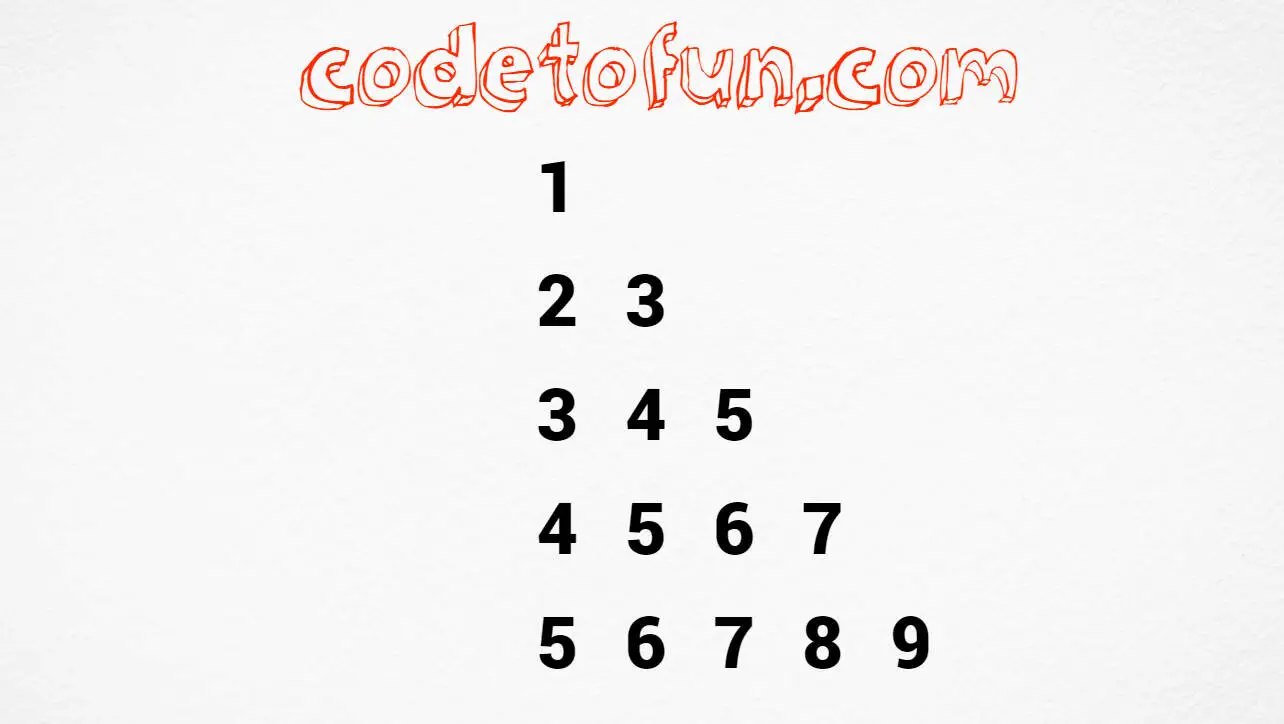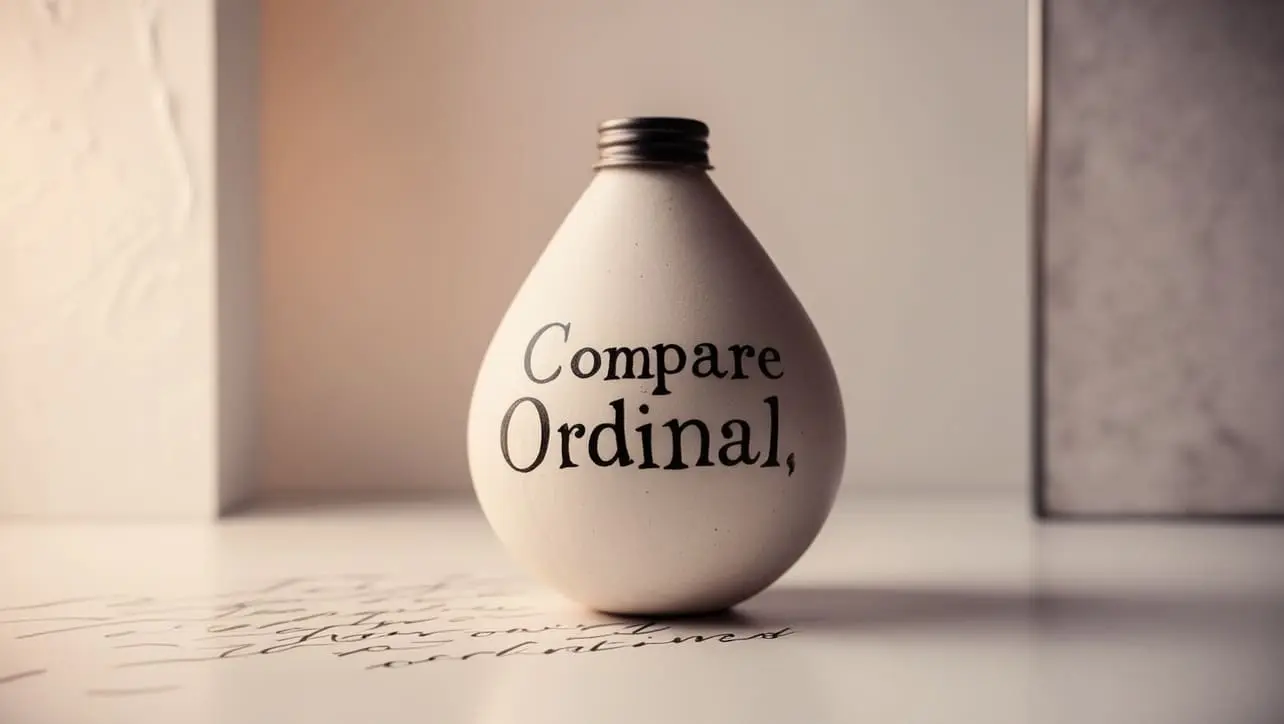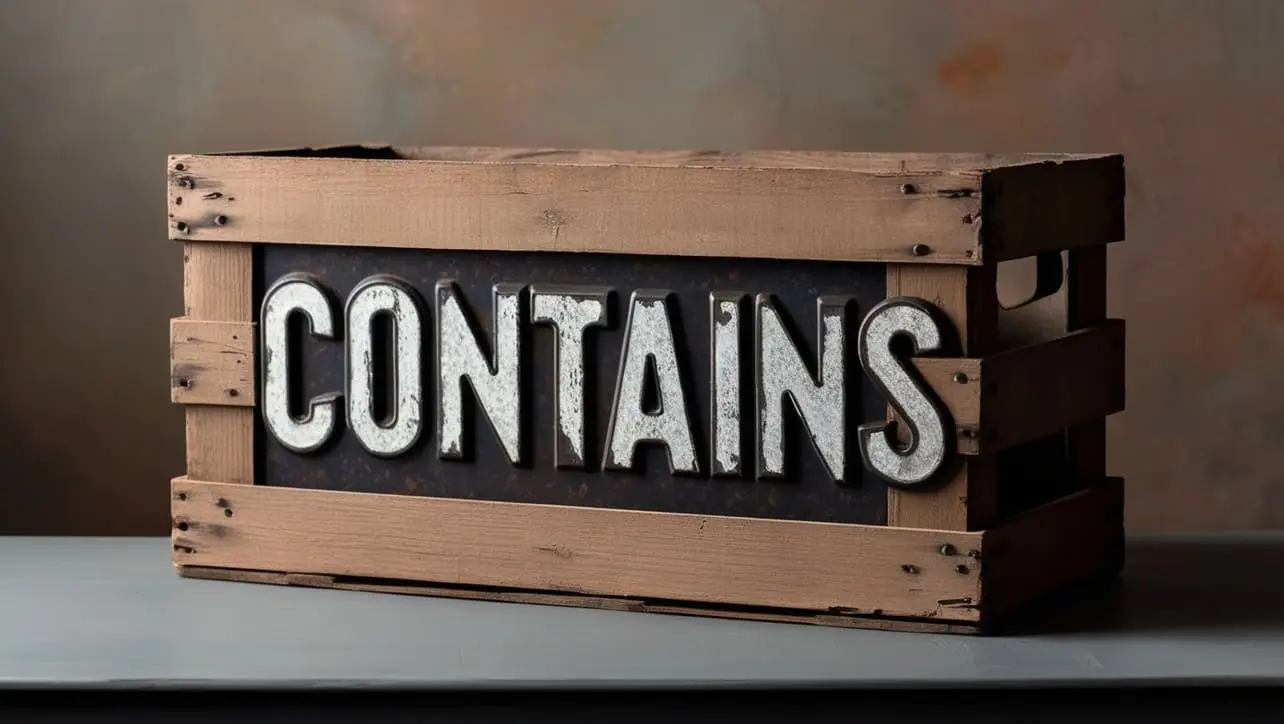
C# Topics
- C# Intro
- C# String Methods
- C# Interview Programs
- C# Star Pattern
- C# Number Pattern
- Number Pattern 1
- Number Pattern 2
- Number Pattern 3
- Number Pattern 4
- Number Pattern 5
- Number Pattern 6
- Number Pattern 7
- Number Pattern 8
- Number Pattern 9
- Number Pattern 10
- Number Pattern 11
- Number Pattern 12
- Number Pattern 13
- Number Pattern 14
- Number Pattern 15
- Number Pattern 16
- Number Pattern 17
- Number Pattern 18
- Number Pattern 19
- Number Pattern 20
- Number Pattern 21
- Number Pattern 22
- Number Pattern 23
- Number Pattern 24
- Number Pattern 25
- Number Pattern 26
- Number Pattern 27
- Number Pattern 28
- Number Pattern 29
- Number Pattern 30
- Number Pattern 31
- Number Pattern 32
- Number Pattern 33
- Number Pattern 34
- Number Pattern 35
- Number Pattern 36
- Number Pattern 37
- Number Pattern 38
- Number Pattern 39
- Number Pattern 40
- Number Pattern 41
- Number Pattern 42
- Number Pattern 43
- Number Pattern 44
- Number Pattern 45
- Number Pattern 46
- Number Pattern 47
- Number Pattern 48
- Number Pattern 49
- Number Pattern 50
- Number Pattern 51
- Number Pattern 52
- Number Pattern 53
- Number Pattern 54
- Number Pattern 55
- Number Pattern 56
- Number Pattern 57
- Number Pattern 58
- Number Pattern 59
- Number Pattern 60
- Number Pattern 61
- Number Pattern 62
- C# Alphabet Pattern
C# Number Pattern 33

Photo Credit to CodeToFun
C# Number Pattern 33
Here`s a program that prints the above number pattern using C# Programming:
using System;
namespace myApp {
class Program {
static void Main(string[] args) {
int i, j;
for (i = 1; i <= 5; i++) {
for (j = 1; j <= i; j++)
Console.Write((i + j - 1) + " ");
Console.WriteLine();
}
}
}
}💻 Testing the Program
When you run the above program, it will print the following output:
1 2 3 3 4 5 4 5 6 7 5 6 7 8 9
🧠 How the Program Works
Let's break down the logic behind the code:
- The program starts with the using System; statement, which indicates that the program will be using classes from the System namespace.
- The program defines a new namespace called myApp. Namespaces are used to organize code and prevent naming conflicts.
- Inside the myApp namespace, there is a class named Program. C# programs usually have a class with a Main method as an entry point. The Main method is the starting point of the program.
- The Main method is declared with the signature static void Main(string[] args). It takes a string array args as a parameter, which allows the program to accept command-line arguments. However, in this specific program, the args array is not used.
- Two integer variables i and j are declared outside the nested for loops. These variables will be used as loop counters.
- The outer for loop runs from i = 1 to i <= 5, and increments i by 1 in each iteration. This loop controls the number of rows in the output pattern.
- Inside the outer for loop, there is another nested for loop that runs from j = 1 to j <= i, and increments j by 1 in each iteration. This loop controls the number of columns (elements) in each row of the output pattern.
- In the inner loop, the Console.Write method is used to print the value of (i+j-1) followed by a space. The expression (i+j-1) generates the pattern of numbers for each row. For example, when i=3 and j=2, the output will be 4 because (3 + 2 - 1) = 4. The space between the numbers ensures they are separated in the output.
- After the inner loop completes, the Console.WriteLine method is called to move to the next line, creating a new row in the output pattern.
- The program continues executing the outer for loop until i becomes 6, which causes the loop condition i <= 5 to evaluate to false. At this point, the program exits the outer loop, and the Main method ends.
- The program execution completes, and the console application will terminate.
💯 Tips for Enhancement:
Explore the versatility of this pattern by adjusting its parameters. Whether you increase or decrease the size, tweak the spacing, or modify the characters used, each change opens up a world of possibilities, allowing you to customize and create your unique visual effects.
✔ Conclusion:
Creating visually appealing patterns is not only a fun endeavour but also a great way to enhance your programming or design skills. We hope this tutorial has inspired you to explore the world of creative coding. Share your creations with us, and let your imagination run wild!
🤗 Closing Call-to-Action:
We'd love to see your unique interpretations of the number pattern. Share your creations in the comments below, and don't hesitate to reach out if you have any questions or suggestions for future tutorials. Happy coding!
👨💻 Join our Community:
Author

For over eight years, I worked as a full-stack web developer. Now, I have chosen my profession as a full-time blogger at codetofun.com.
Buy me a coffee to make codetofun.com free for everyone.
Buy me a Coffee












If you have any doubts regarding this article (C# Number Pattern 33) please comment here. I will help you immediately.